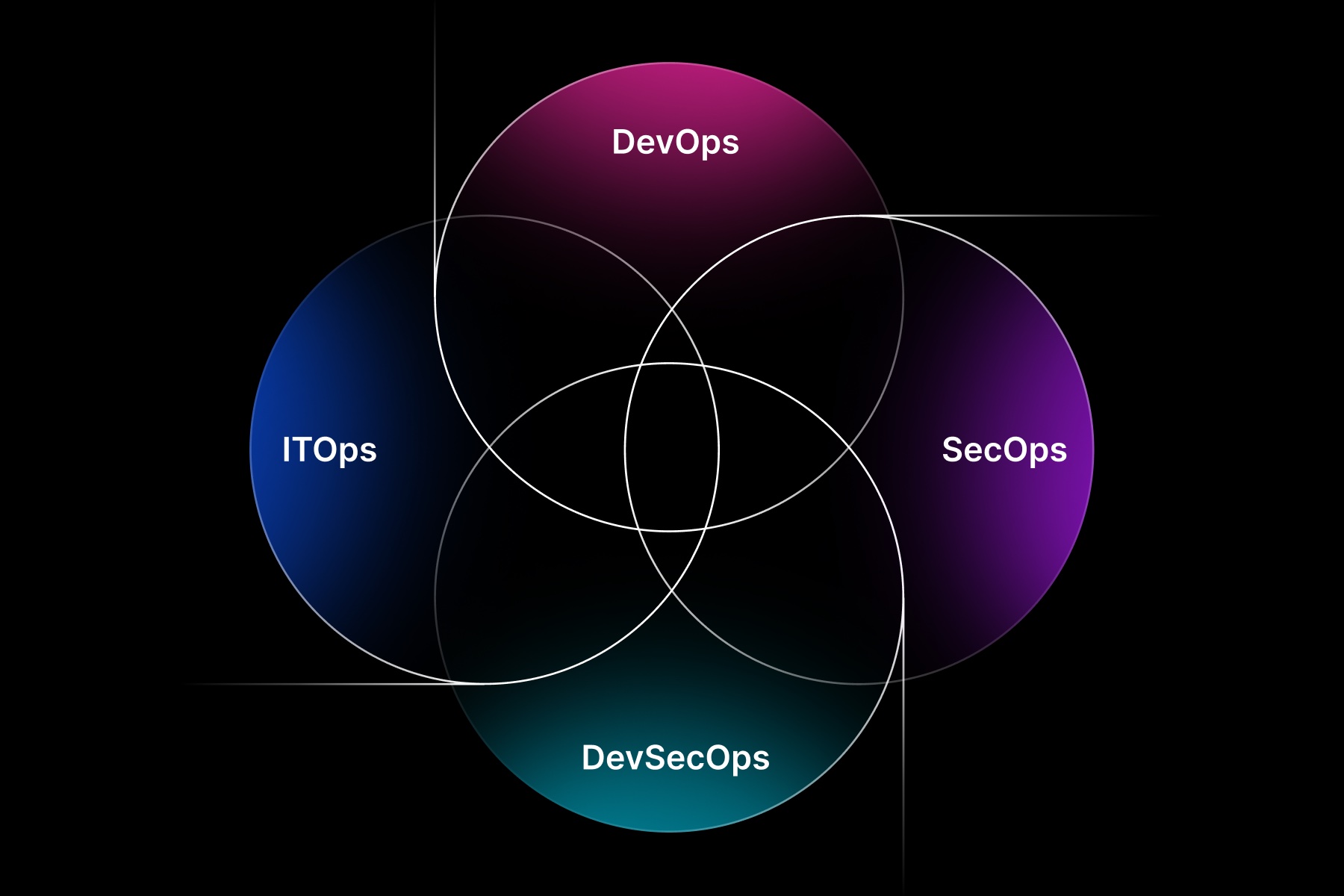ITOps, SecOps, DevOps, and DevSecOps may sound similar. And they are — to a degree. But they have different areas of focus, histories, and operational paradigms.
Keep reading for an overview of what ITOps (IT operations), SecOps (security operations), DevOps (development operations), and DevSecOps (development, security, and operations) mean and how they compare — and why you shouldn’t worry so much about defining these terms perfectly as you should about finding ways to operationalize collaboration between your various teams.
SecOps vs. ITOps
SecOps is what you get when you combine security teams with IT operations teams, or ITOps. Put another way, it’s the integration of security into IT operations.
Traditionally, most organizations have maintained both ITOps and security teams. The ITOps team’s responsibility is to manage core IT processes — like provisioning infrastructure, deploying applications, and responding to performance issues. The security team, meanwhile, specializes in identifying and responding to security risks.
In the past, security and IT operations did not work in tandem. They pursued their various responsibilities in isolation from each other.
SecOps changes that. The big idea behind SecOps is that it combines security with ITOps in a way that maximizes collaboration.
This isn’t to say that ITOps teams are totally incapable of managing security without a SecOps mindset. Any decent IT team has always done its best to secure the environments it manages to the best of its ability. But ITOps engineers never specialize in security. The task of identifying and responding to security problems fell to a separate team of security professionals.
With SecOps, the security team works more closely with the IT operations team, and vice versa. When done well, SecOps ensures that security is an active priority across all day-to-day IT operations rather than something that is managed separately.
To be clear, SecOps doesn’t mean turning your security and ITOps teams into a single, combined team. The teams remain separate; they just work more closely together.
ITOps vs. DevOps
DevOps is a collaboration between developers and IT operations teams.
Like SecOps, DevOps was conceived to address inefficiencies associated with isolation between teams. The goal of DevOps is to ensure that developers understand the needs of ITOps when they write software, and that IT operations teams understand what developers intend for software to do when they manage it.
Also like SecOps, DevOps doesn’t erase independent development and ITOps. Some organizations may choose to create a new DevOps team alongside these two other teams, while others “do” DevOps simply by finding ways for developers and IT engineers to work more closely together. Either way, though, businesses still typically keep their development and IT operations teams.
SecOps vs. DevOps
SecOps and DevOps share key high-level similarities:
- Their main goal is to improve collaboration between teams that would otherwise operate independently.
- They tend to encourage automation and real-time communication in an effort to foster collaboration.
- They increase the efficiency and scalability of complex operations.
- They represent philosophies or goals more than specific operational frameworks. In other words, there is no specific recipe to follow or tool to use in order to enable either SecOps or DevOps. It’s up to organizations to decide how to operationalize both concepts.
The big difference between the two concepts is the specific teams involved. As we’ve noted, SecOps brings together security teams and ITOps teams, while DevOps focuses on collaboration between developers and ITOps.
So, ITOps is part of both equations, but SecOps and DevOps are otherwise different.
What about DevSecOps?
It’s hard to talk about ITOps, SecOps, and DevOps without also mentioning DevSecOps, a concept that brings all the teams we’ve talked about so far — development, security, and IT operations — together into a collaborative model.
You can find different definitions of DevSecOps out there. Some treat it as the result of combining DevOps with SecOps. Others imply that the distinction lies in how much your DevSecOps program focuses on development as opposed to IT operations.
One way to think about DevSecOps is that it embraces the “shift left” of security, meaning that security implementation and testing happens much earlier in software and application development as opposed to being added in afterward.
The differences between DevOps, SecOps, and DevSecOps are nuanced, but at their core they are collaborative efforts by once disparate teams looking to break down silos.
Collaboration Is the Key
The key takeaway is that with ITOps, SecOps, DevOps, and DevSecOps, collaboration is the foundation for success..
What really matters is the ability to ensure that all stakeholders — developers, IT engineers, security engineers, and anyone else who plays a role in software development and delivery — have access to the tools and data necessary to integrate security into all aspects of the software delivery process. That only happens when security becomes the responsibility of everyone, not just a specialized team of cybersecurity experts.
Whether you want to approach integrated ITOps through SecOps, DevOps, DevSecOps, or all three, your goal should be to find ways to achieve meaningful collaboration between your various teams. Don’t just think in abstract terms; think about what it means on a day-to-day basis to ensure that each team understands and can help support the goals of other teams rather than existing on its own island.




